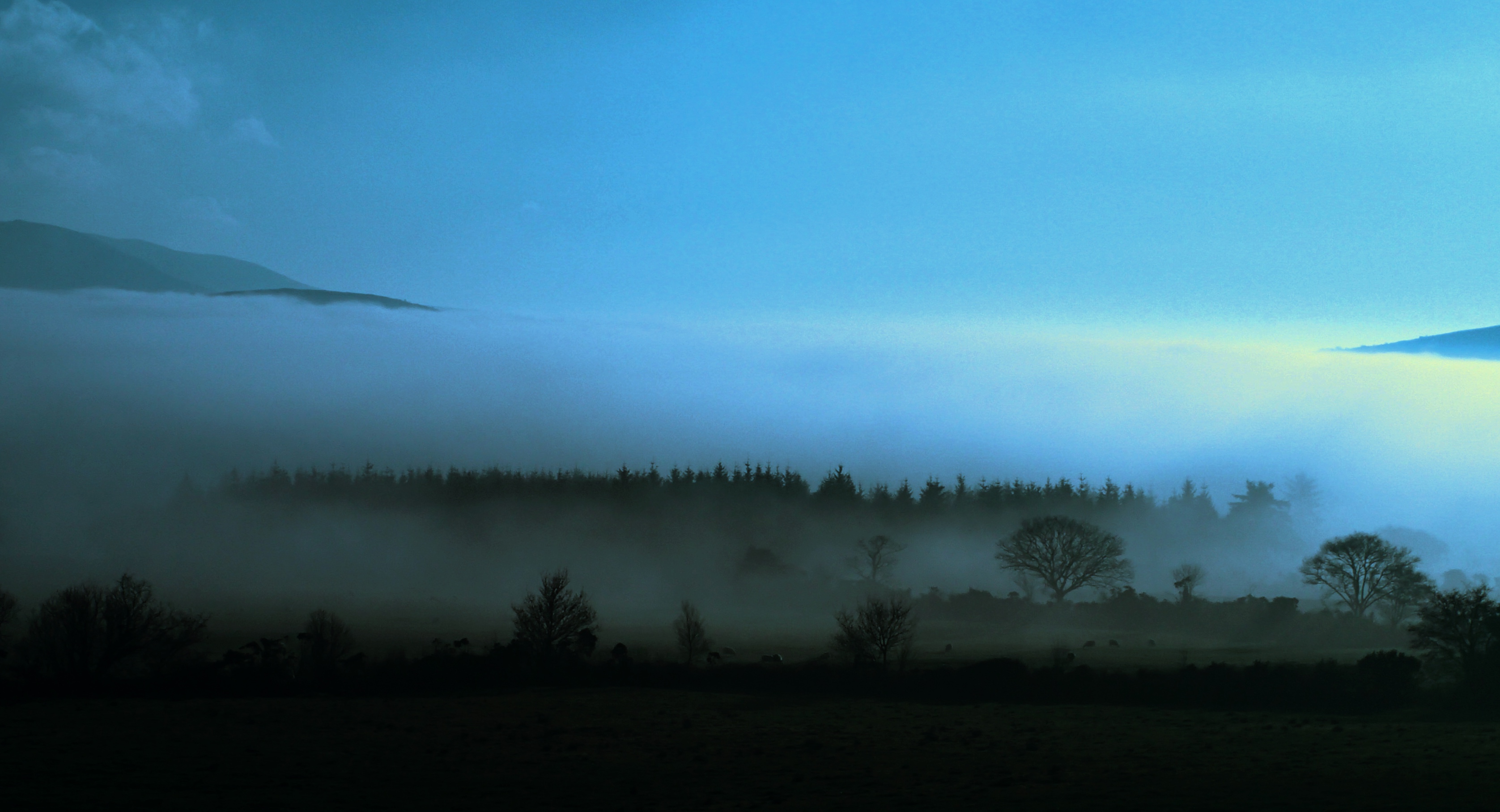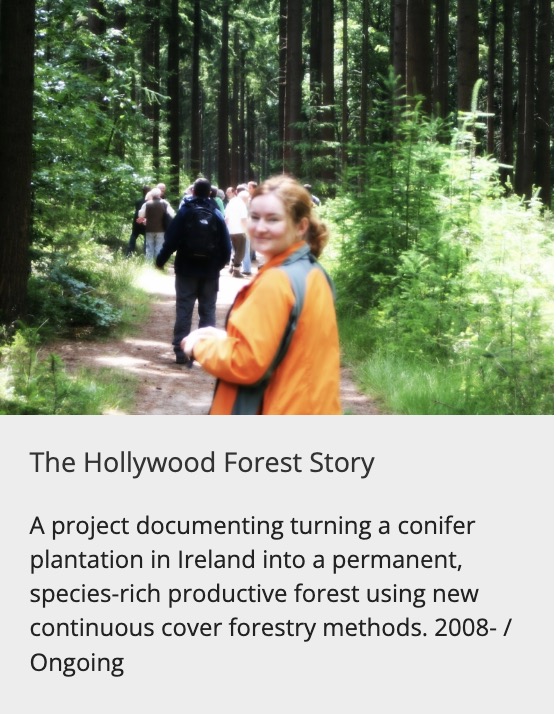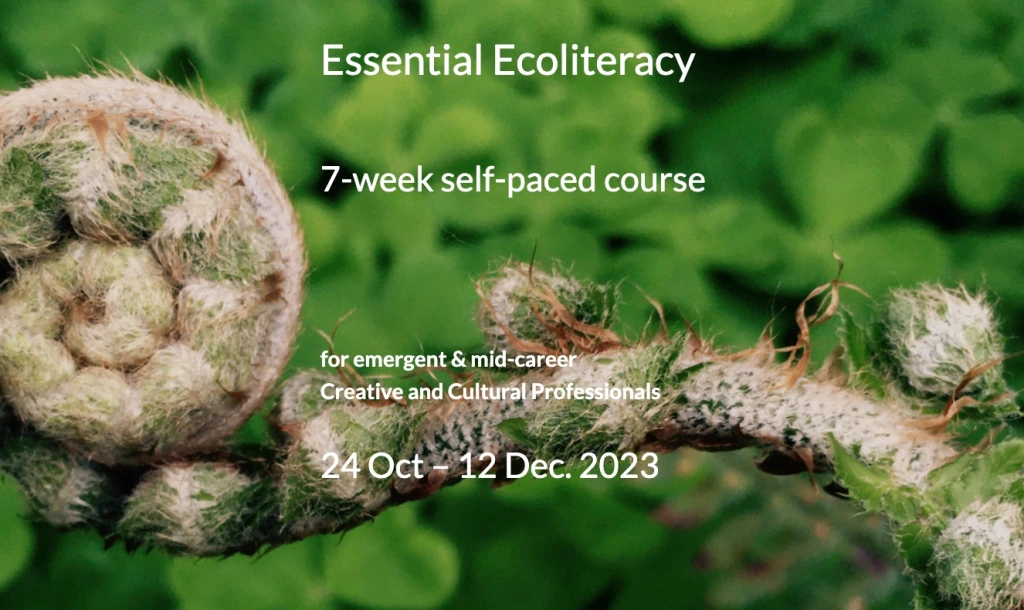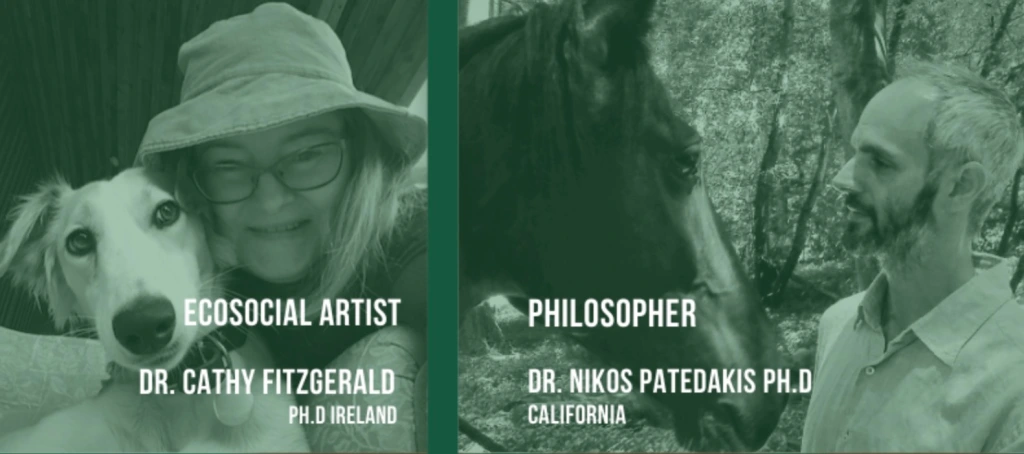The above short video shares the early stages of the transformation of Hollywood Forest around 2008, in South County Carlow, Ireland – “the smallest close-to-nature forest in Ireland”.
There is no human dialogue, rather, the forest inhabitants will sing and show you the changes.
Cathy Fitzgerald
ecological artist | ecoliteracy educator | researcher
Kia Ora– Hello! My name is Cathy Fitzgerald, and I’m an Irish-based New Zealander living in rural Ireland, the home of my ancestors, for the past 25 years.
I am inspired by forests, ecological forestry and contemporary ecological art practice and research.
As a child, I sensed that there is inexplicable social power and magic in creativity to remind us to live well with the wider Earth community. I am blessed too, growing up in Aotearoa New Zealand until my 30s– its remaining areas of near-pristine, stunningly beautiful, old-growth, bird-filled forests have long propelled me to explore and practice more ecological, closer-to-nature forest tending.
My ecological (ecosocial) art practice developed from my early career in research science and my work with ecological forest NGOs – Crann and Pro Silva Ireland.
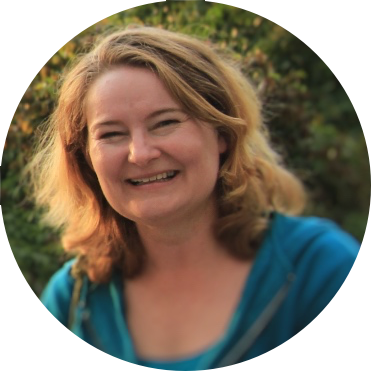
I am best known for the ongoing ecological art practice –The Hollywood Forest Story (relayed on this blog since 2008) and as the Founder-Director of Haumea Ecoversity (providing ecoliteracy training to creative professionals since 2019)
The Hollywood Forest Story is the story of the ‘little wood that could’ – that I live with, in South County Carlow, Ireland.
Specifically, The Hollywood Forest Story is about the learning and efforts to transform a small monoculture conifer plantation into a beautiful, permanent, productive, multispecies, bird-filled forest following more ecologically wiser Closer-to-Nature forestry practices (also known as continuous cover forestry CCF in Ireland).
The Hollywood Forest Story is a recognised case study of ecological art practice in the International Library of Creative Sustainability (hosted by Creative Carbon Scotland). This listing gives a helpful summary of the Hollywood Forest Story.
Press, reviews and contributions to the emergent ecological art practice field
The Hollywood Forest Story has been reviewed by The Irish Times (2020), features in the US Minding Nature journal, and makes a contribution to the Stories of the Great Turning (2013; inspired by Joanna Macy), as a case study for Ireland’s Earth Writings (begun in 2019) with Prof. Karen Till, Dr Nessa and Prof Gerry Kearns, and for the ecological art practice textbook EcoArt in Action (2022) and as a story for the Symbiocene in the Routledge Handbook of Placemaking (2022), among many others.
See The Hollywood Forest Story Archive: (click below)

Highlights from the Hollywood Forest Story…
My ‘slow art’ practice The Hollywood Forest Story (ongoing since 2008) is inspired by the small conifer plantation community that I live with, in South County Carlow, Ireland.
I am passionate about learning and sharing stories of new permanent, regenerative and restorative mixed-species forestry that attends to more encompassing ecological wisdom – wiser forestry for environmental, social, economic, planetary, and intergenerational wellbeing.
As ecological breakdown is accelerating, how we care for forests beyond the clearfell monoculture forestry model, predominant in Ireland and many parts of the world, is beyond urgent to stabilise Earth’s life-promoting systems. It is heartening, meaningful work to contribute in a small way to a better world.
My embedded-in-my forest-home ecological art practice is a transversal activity (after Guattari’s ecosophy) in which I explore and value knowledge and knowings from art, non-art disciplines and real-life experiences in forests.
- My eco-social art practice (my term for ‘ecological art practice’) involves me exploring, practising new-to-Ireland, Close-to-Nature continuous cover forestry, creating experimental films, writing, absorbing new eco-philosophy ideas, involvement with forestry NGOs, forests, ecologists and forest workers and forest owners, and occasionally contributing to Irish forest policy development, ecocide law advocacy and Irish arts and heritage policy.
- Over time, my creative practice has developed my ecoliteracy and confidence to speak up for life-sustaining ecological forestry.
In 2012: I helped get new-to-Ireland continuous cover forestry as the key point in the new Irish Green Party Forest policy - In 2013 and 2020: I successfully argued that the Green Party of Ireland and Northern Ireland recognise that the crime of ecocide (the long-term destruction of ecosystems by man) be supported in international law. I am an Earth Protector for the Stop Ecocide international movement
- In 2018: I successfully gained my Ph.D. in Creative Practice, The Ecological Turn: Living Well with Forests: articulating eco-social art practice ” which was based on my ecological creative Hollywood Forest Story practice and review of the exemplary work of the ecological art practitioners, the late Helen and Newton Harrison. My ongoing ecological art practice development and research continues to inform The Hollywood Forest Story and Carlow’s Creative Drummin Bog programme and Haumea Ecoversity ecoliteracy courses that I have offered to 250+ course participants since 2019.
- 2019-ongoing: I became the first Irish signatory for the global Culture Declares an Emergency movement and began research on the peoples’ and UNESCO Earth Charter (2000) for deeper ethical understandings of sustainability to best evolve and guide creative practice for inclusive systemic/integrated/holistic change. In response, I founded Haumea Ecoversity to equip creatives and cultural professionals across the world with essential ecoliteracy for their professional creative work (this work has been featured on: Lyric FM, Our ThrivingTribes, AwakenHub, and Green Foundation Ireland).
- 2020 – I received an Arts Council Professional Development Award to undertake the 6-month accredited Education for Sustainable Development (ESD) course in 2021, hosted through Earth Charter International, at the UN Univ. for Peace, in Costa Rica (who host the UNESCO Chair in ESD). UNESCO has twice endorsed the global peoples’ Earth Charter as an integrated/holistic values framework for engaging and guiding civil society towards implementing the UN SDGs in inclusive, systemic and ethical ways.
- 2021 – accredited as an ESD Earth Charter Educator through Earth Charter International.
- 2022 – invited by the late Prof Emeritus Newton Harrison to join him and other leading ecological art researchers for a 2-day research workshop in UC San Diego
2022 – writings in the EcoArt in Action and Routledge Placemaking handbooks – see the archive page - 2022 – invited to present at the first Irish Arts Council on a roundtable on developing a ‘Climate Action’ policy
- 2022-23 worked with Dublin-based curator-in-residence Shannon Carroll for a new ecological artist interview series resource for Irish teachers: ‘Speaking of Which II- The Ecological Edition’
- 2022 – convened keynote conversation with UK author Lucy Jones of Losing Eden for the inaugural Earth Rising at IMMA.
- 2022-3 ecoliteracy trainer and mentor for the Arts Council ‘Invitation to Collaborate’ Carlow Arts Office-led 3-habitat Gnáthoga Nadúrtha wetlands across Carlow, Kildare and Meath
- 2023: Collaborated with ecopoet and writer Grace Wells to deliver a 3-day Vision, Values and Vocabulary workshop for the Brewery Lane Writers Festival in Tipperary.
- 2023: Invited to lead the Art & Ecology Panel for Hometree’s 2nd Ardnaculla Summer School
What others are saying:
“Dear Cathy, From our perspective, very good work.”
Helen and Newton Harrison, 24 January 2011
‘Thank you so much for your fantastic videos. They are deeply moving in their simplicity. The videos are very moving, – a very clear way of communicating this huge catastrophe on an intimate scale ‘
Kevin Buckland, Art Ambassador, 350.org, October 2010
The Symbiocene, as a period in the history of humanity on this Earth, will be characterized by the human intelligence and praxis that replicate the symbiotic and mutually reinforcing life-reproducing forms and processes found in living systems. This period of human existence will be a positive affirmation of life, and it offers the possibility of the complete reintegration of the human body, psyche, and culture with the rest of life… As with solastalgia, contemporary artists have been inspired by the Symbiocene to negate the Anthropocene. The artists Jenny Brown in Australia and Cathy Fitzgerald in Ireland have both delivered powerful responses to this relatively new idea.
Glenn A. Albrecht (2019) Earth Emotions: New Words for a New World, Chapter 4
The orientation of Cathy’s activity is simultaneously ecological, creative, political, and educational. It’s cross-referenced through extensive personal interaction and strategic use of social media – both of which are aimed at multiple constituencies. Her intention in cross-fertilizing forestry with creative film work, writing, and political action is to encourage exchange between diverse constituencies so as to provoke ecosophical thinking. So her public self-education as a forester creatively sets out to mesh together innovative forestry practice, new conceptions of the nature/culture relationship, and fundamental issues of community and environment – thus offering new ideas and models to a variety of lay and specialist constituencies.
Dr. Iain Biggs ‘Identity, contemporary art and ecology’ 12 June 2014
‘I was most struck by the line – “there is something oddly reassuring about young trees at night” …. I doubt I can add anything so beautiful as the previous comments but I do admire the blend of poetry and prose in your written description. There’s also a moment in the video when your dog walks out of the blackness and into the light that is wonderfully startling and reassuring. The eyes in the blackness evoke the ancient fear of wolves or being watched followed by the lollygagging (not quite bounding) gait of a trusted companion. The wild and domestic in one lovable body much like your like your own little patch of forest which must be managed in order to restore wildness. In the video I almost wished that the early shot where you pull focus on the bramble would be held just a moment longer so we can situate ourselves before the montage of ash branches begins. Minor details though, as this is enthralling. A blend of familiar and unfamiliar that only shooting at night can reveal.
Steve Rust, co-editor of Ecocinema Theory and Practice, 14 February 2013
Cathy understands her work as a form of ‘deep sustainability’: it includes ecological functions, aesthetic innovations, and most importantly, community-based environmental consciousness through forest policy development, which entails an alteration in how individuals relate to their communities. She first learned about community forestry practices in 1995 through a South Leitrim Crann project; eleven years later, she revisited the place through a documentary lens and exhibition space, with support from Crann and The Dock in County Leitrim. In these artistic works, Cathy brought together the voices and images of local people who volunteered to plant broadleaf woodlands almost twenty years ago. This new sustainable wood culture in what was a monoculture conifer region now offers an ecological and economic model for other regions in Ireland. Cathy argues for careful tending of land-bases that we must return to if all species are ‘to survive and thrive’. Her attention to place also asks us to slow down and pay attention to the richness of forest lives. There is a practical value in slowness: it’s healthy for us to pay attention to the textures of places. It allows us to create unexpected networks with lives that we wouldn’t have otherwise come into contact with.
Prof. Karen Till, Cultural Geographer, Maynooth University (2012) extract from ‘Field Findings’
The Red Stables Art & Ecology summer school, Dublin City Art Office.
Editor of Earth Writings (2019).
Watched your presentation this morning, Cathy And found it very solid, galvanising, gentle and dogged (!). I really appreciate the work you are doing.
Artist, Action Researcher, Clown, Educator and Joanna Macy – Great Turning Advocate: Dr. Chris Seeley, 22 February 2013
Haumea Ecoversity
Since completing my Ph.D. in 2018, and knowing firsthand the challenges that ecological insights bring to creative practice, I am also known for founding the popular independent artist-led
HAUMEA ECOVERSITY in 2019.
I collaborate with eco-aesthetically attuned philosopher Dr Nikos Patedakis (DangerousWisdom.org, California).
We offer comprehensive online courses on ECOLITERACY and VALUES-based EDUCATION with the UNESCO-endorsed EARTH CHARTER. Our self-paced, salon-style learning for small cohorts attracts mid-career creatives and cultural professionals from Ireland, the UK, the USA, Canada, New Zealand, Australia, China and Singapore.
That story is shared at Haumea Ecoversity.ie
